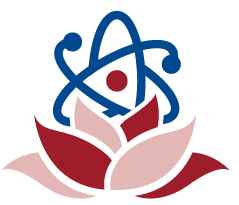| Betaine བྷེ་ཊན་འདུས་རྫས། | biol. | |
| beta-carotene ལ་སེར་བཅུད་རྫས་བྷི་ཊ། | biol. | |
| beta strand བྷི་ཊ་སྐུད་པ། བྷི་སྐུད། | phys. Element of a beta sheet. One of the strands that is hydrogen bonded to a parallel or antiparallel strand to form a beta sheet. | བྷི་ཊ་ལྷེབ་གཟུགས་ཀྱི་གྲུབ་ཆ་སྟེ། མཉམ་འགྲོའི་སྐུད་པ་ཞིག་གམ་ལྡོག་འགྲོའི་སྐུད་པ་ཞིག་ལ་ཡང་རླུང་འཆིང་སྦྱོར་བྱས་ཏེ་བྷི་ཊ་ལྷེབ་གཟུགས་གྲུབ་པར་བྱེད་པའི་སྐུད་པ་ཞིག་ལ་གོ |
| beta sheet བྷི་ཊ་ལྷེབ་གཟུགས། བྷི་ལྷེབ། | biol. A secondary structure that occurs in many proteins and consists of two or more parallel adjacent polypeptide chains arranged in such a way that hydrogen bonds can form between the chains. | མཉམ་གཤིབ་ཀྱི་མང་ཟློས་སྤྲི་རྩིའི་ཕྲེང་བ་དུ་མ་ཡོད་པ་མ་ཟད་ཕྲེང་བ་དེ་དག་གི་དབར་དུ་ཡང་རླུང་འཆིང་བ་གྲུབ་ཐུབ་པའི་ངོ་བོར་གྲལ་སྒྲིག་ཅིང་སྤྲི་རྫས་མང་པོའི་ནང་དུ་ཡོད་པའི་བཀོད་རིམ་གཉིས་པ་ཞིག་ལ་ཟེར། |
| beta ray བྷི་ཊ་འཕྲོ་ཟེར། | phys. Stream of beta particles (electrons or positrons) emitted by certain radioactive nuclei. | འགྱེད་འཕྲོའི་རང་བཞིན་ཅན་གྱི་ལྟེ་རྡུལ་ངེས་ཅན་ཁག་ཅིག་གིས་འཕྲོ་རུ་བཅུག་པའི་བྷི་ཊ་ཕྲ་རྡུལ་ (གློག་རྡུལ་ལམ་ལྡོག་མའི་གློག་རྡུལ་) གྱི་རྒྱུན། |
| beta particle བྷི་ཊ་རྡུལ། | phys. Electron (or positron) emitted during the radioactive decay of certain nuclei. | ལྟེ་རྡུལ་ངེས་ཅན་ཁག་ཅིག་གི་འགྱེད་འཕྲོའི་ཟད་འགྱུར་གྱི་སྐབས་སུ་འཕྲོ་ཡོང་བའི་གློག་རྡུལ་ (ཡང་ན་ལྡོག་མའི་གློག་རྡུལ་) ། |
| Beta decay བྷི་ཊ་ཟད་འགྱུར། | phys. | |
| beta བྷི་ཊ། | phys. The second letter of the Greek alphabet (Β, β) | གྷི་རིག་གི་གསལ་བྱེད་ཀྱི་ཡི་གེ་གཉིས་པ། (Β, β) |
| Bessel function བྷེ་སེལ་ལྟོས་གྲངས། | math. | |
| beryllium (Be) བེ་རི་ལི་ཡམ། | biol. | |
| Bernoulli's principle སྦེར་ནོ་ལིའི་རྩ་འཛིན། | phys. Pressure in a fluid along a given streamline decreases as the speed of the fluid increases. | རྒྱུག་གཟུགས་ཤིག་གི་མགྱོགས་ཚད་འཕེལ་སྐབས་རྒྱུག་གཟུགས་དེའི་ནང་རོལ་གྱི་རྒྱུན་ཐིག་ངེས་ཅན་ཞིག་གི་ཕྱོགས་སུ་ཡོད་པའི་གནོན་ཤུགས་ཇེ་ཆུང་དུ་འགྲོ་བ་ཡིན། |
| Bernoulli theorem བྷེར་ནོ་ལིའི་ངེས་སྲོལ། | phys. | |
| Beriberi བཅུད་ནད་བྷེ་རི་བྷེ་རི། | biol. | [བཅུད་རྫས་ B1 ཉུང་སྐྱོན་ལས་བྱུང་བའི་ནད་གཞི་བྷེ་རི་བྷེ་རི།] |
| Bergius process བྷེར་ཇེསི་བྱེད་རིམ། | phys. | |
| benzene སྦེན་རྫིན། | biol. | |
